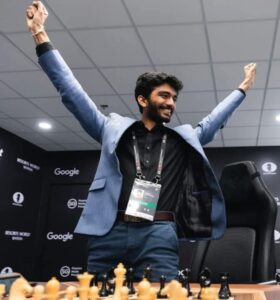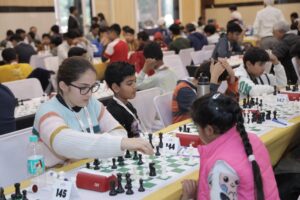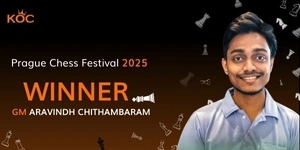After nearly three decades, two of chess’s greatest titans—Garry Kasparov and Viswanathan Anand—are going head to head once more. But this time, it’s not classical chess. Their arena is Chess 960 (also known as Fischer Random Chess), and the battleground is the newly renovated Saint Louis Chess Club, which re-opens in October with this marquee match.
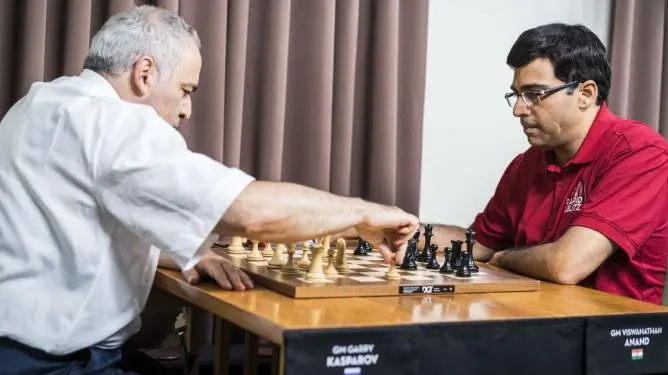
In this event, titled “Clutch Chess: The Legends”, there will be 12 games over three days (October 8 to October10, 2025), combining rapid and blitz time controls. Each game carries escalating stakes, both in terms of points and prize money.
For many fans, this is not just another exhibition — it’s a chance to see two Great chess players adapt their deep experience to a format that levels (or shifts) the opening preparation battlefield.
Live Updates: Day 2 Results
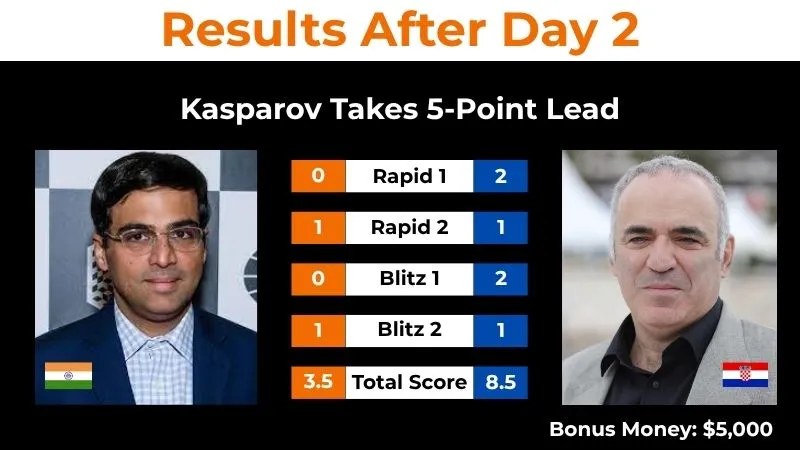
Day 2 of the Clutch Chess Legends 2025 saw a dramatic turn of events as Garry Kasparov extended his lead over Viswanathan Anand to 8.5–3.5.
The day began with heartbreak for Anand. In the opening rapid game, he reached a completely winning position and still had over a minute on his clock—but lost on time, handing Kasparov an unexpected victory. The setback seemed to linger, as Anand blundered a piece early in the next game, allowing Kasparov to score again and take firm control of the match.
Kasparov’s play on Day 2 was vintage—calm under pressure, quick on the clock, and ruthless when the opportunity appeared. Anand, meanwhile, will aim to regroup for the final day, where 12 points are still at stake.
Day 3, featuring the last two rapid and blitz rounds, will be played on Friday, October 10, starting at 1 p.m. ET / 19:00 CEST / 10:30 p.m. IST.
Day 1 Recap
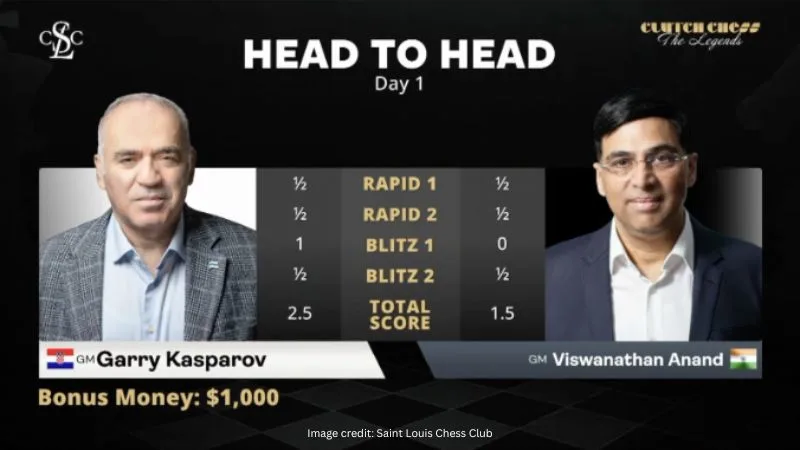
Day 1 of the Clutch Chess 960: Kasparov vs Anand clash delivered the perfect mix of tension and brilliance.
Despite Viswanathan Anand controlling much of Rapid Game 1, the encounter ended in a tense draw after deep endgame maneuvering. The second rapid game followed a similar script—sharp play, balanced positions, and another split point.
In the blitz segment, however, Garry Kasparov showed his trademark fighting spirit. Playing with the black pieces in Game 1, he converted a complex middlegame imbalance into a clinical victory under time pressure. The final blitz game of the day was drawn, giving Kasparov a 2.5 – 1.5 lead after Day 1.
What’s Chess 960?
Traditional chess has been dominated by opening theory — memorized lines, engine novelties, deep prep. Chess 960 rearranges back-rank pieces randomly (following some rules) so that standard openings lose much of their relevance. The result: creative improvisation, over-the-board thinking, and a test of raw understanding.
In this context:
- Prepared “book lines” carry less weight.
- Players lean more heavily on fundamentals: piece coordination, tactics, dynamic play.
- Mistakes or misjudgments in the opening often lead more immediately to disaster.
For veterans like Kasparov and Anand, Chess 960 presents both a challenge and an opportunity — to prove that their chess instincts still shine when the script is flipped.
Stakes & Format
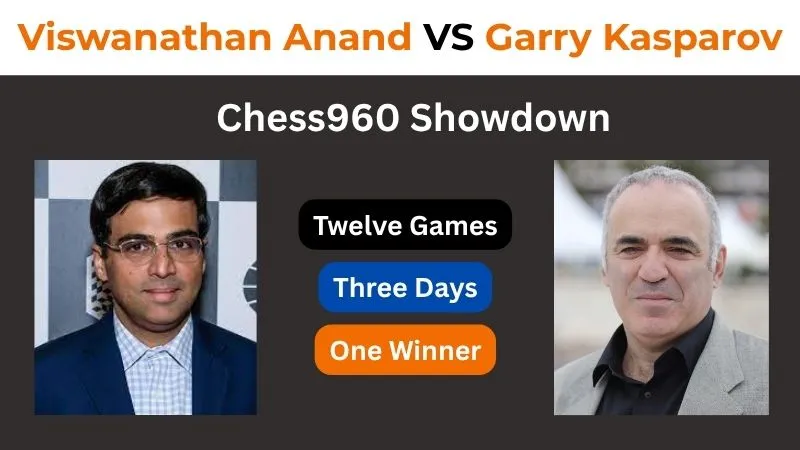
Here’s how the match is structured:
- 12 games across three days
- Scoring escalates: Day 1 wins are worth 1 point, Day 2 wins are worth 2, and Day 3 wins fetch 3 points.
- Similarly, the prize money rises proportionally: Day 1 wins carry lower cash rewards, and Day 3 wins bring the highest payouts.
- The total prize fund is USD 144,000.
- In case of a tie, prize money is split per event rules.
This ascending-point structure ensures that even if one player builds an early lead, the match remains alive until the final day — every game matters. Matches like this also inspire countless learners enrolled in online chess classes to appreciate how true understanding matters more than memorization.
The Rivalry between Kasparov and Anand
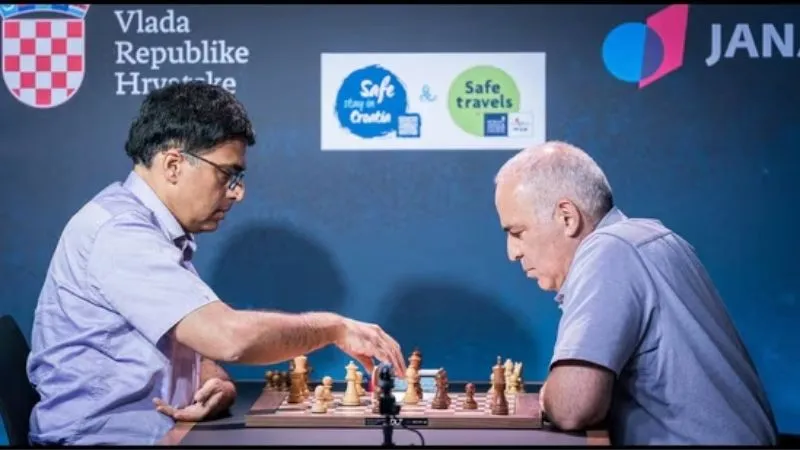
The names Garry Kasparov and Viswanathan Anand evoke a golden age of chess — the 1990s and early 2000s — when every encounter between them carried weight. Their head-to-head record is telling: Kasparov won 22 of their classical and rapid encounters, Anand 8, and about 35 ended in draws.
Key Historical Moments
- 1995 PCA World Championship: Their most consequential clash came when Kasparov (defending champion) faced Anand (challenger) in New York. The match spanned 20 games; Kasparov secured the title after 18 games with 4 wins, 1 loss, and 13 draws.
- In that 1995 match, the first eight games were all draws — a record for such a high-stakes start. Anand struck in game 9, only for Kasparov to rebound strongly, going on to dominate the later phase.
- Over time, Kasparov’s dominance in their individual meetings grew more pronounced. In classical games, Kasparov holds a 15–3 plus many draws lead.
- Still, Anand had his moments. Their early encounters, such as Anand’s tactical victories in the 1991 Tilburg tournament, showed that he was willing to traverse sharp, unbalanced positions against Kasparov.
- After Kasparov’s retirement from professional competition in 2005, their head-to-head duels became rarer, limited mostly to exhibitions or occasional rapid events.
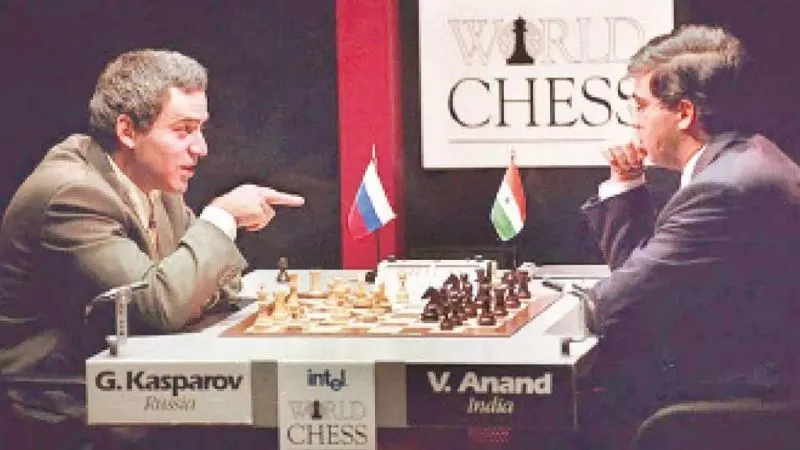
What to Watch For — Key Themes & Storylines
Here are a few angles I’d flag for readers or viewers:
| Theme | What to Look For |
| Opening Creativity | Which patterns or placements each player favors. Will they gravitate toward symmetric distributions or lopsided piece setups? |
| Time Management | In rapid/blitz settings, managing the clock becomes critical — mistakes under duress are often fatal. |
| Psychological Pressure | The tit-for-tat swings, trying to “steal” a game at a moment of imbalance. |
| Momentum & Risk | Because later wins are worth more, one player might gamble more aggressively in Day 3. |
| Legacy & Relevance | Can these legends adapt to a modern, less conventional format and still dominate? |
Strengths, Weaknesses, and the Unknown
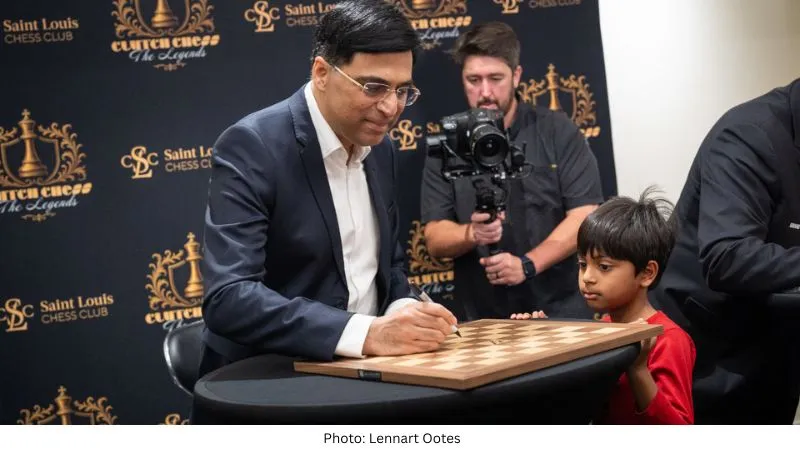
- Kasparov’s strengths: ferocious tactical vision, fighting spirit, ability to complicate positions, and an aggressive mindset that thrives under instability.
- Anand’s strengths: deep positional understanding, calm under pressure, vast endgame experience, and the ability to simplify when necessary.
- Potential weaknesses: Under blitz time stress, even legends falter. In Chess 960, unfamiliar piece layouts might lead to early miscoordination or structural errors. Also, the psychological burden of a trailing score might force too-risky plays.
- Big Unknown: Which style better translates to random starting setups? Who adapts faster to unfamiliar opening topologies?
What Are Kasparov and Anand Doing Now?
When legends step back from full-time competition, their careers often branch into multiple realms. Here’s where each is today.
Garry Kasparov
- Kasparov officially retired from professional chess competition in 2005, though he still participates in select exhibitions and Chess 960 events.
- Even after stepping away, he remains active in the chess world. For instance, he scored 3/9 in the 9LX (Fischer Random) tournament at St. Louis in 2023, showing that his chess vision is still sharp.
- Outside chess, Kasparov is deeply engaged in political activism, writing, and commentary. He chairs / is involved with organizations like Renew Democracy Initiative and Human Rights Foundation.
- He is also a frequent speaker and author on strategy, technology, geopolitics, and human rights issues.
- His public presence is strong: he writes on Substack (“The Next Move”), maintains an active X (formerly Twitter) presence (@Kasparov63), and engages in civic discourse globally.
In short, Kasparov’s life now straddles chess, political strategy, and public thought leadership — and matches like Clutch Chess let him re-enter the competitive board from time to time.
Viswanathan Anand
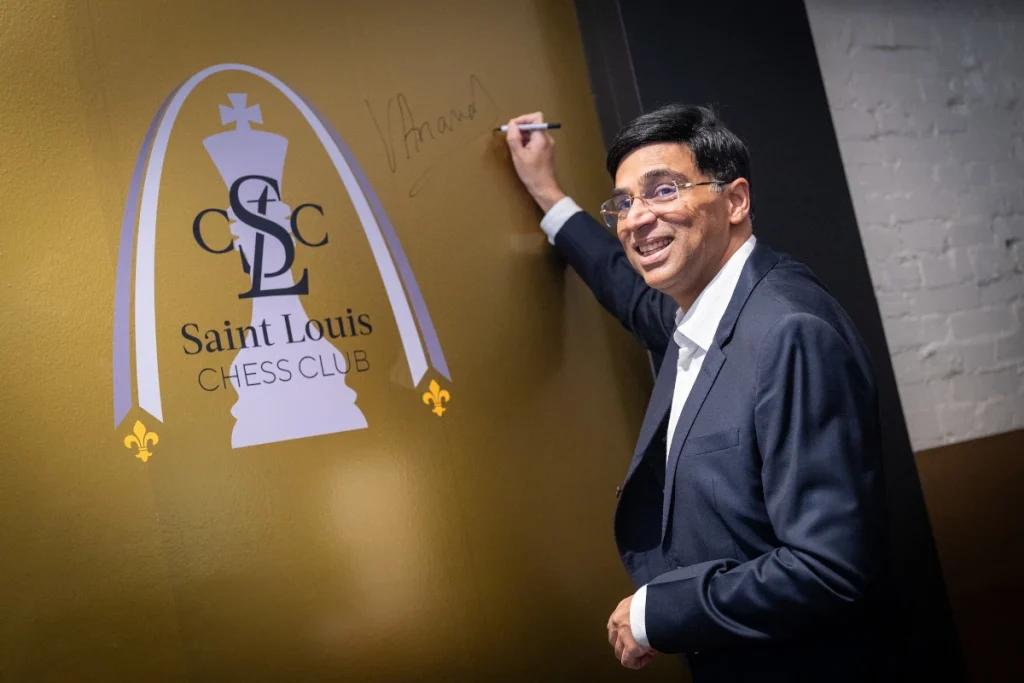
- Anand has never fully retired; rather, he’s transitioned into a “semi-retired” or lightly competitive mode.
- He remains active in tournaments and exhibitions. For example:
- Recently, he defeated 11-year-old Faustino Oro in the “Clash of Generations” match, winning 2–0.
- His FIDE rating remains strong (classical ~2743) and his games (in both official and exhibition formats) continue to be studied.
- A major focus for Anand in recent years is nurturing new talent:
- He founded the WestBridge–Anand Chess Academy (WACA) in 2020, which now reaches students through both traditional coaching and online chess classes.
- His MindChampions Academy, partnered with NIIT, has long supported school-level chess growth in India and remains a pillar of his chess outreach efforts.
- On the institutional side, Anand has held the position of Deputy President of FIDE (the global chess federation).
- Though he rarely vies for the world championship these days, his commentary, role in events, and influence on Indian chess remain substantial.
Thus, Anand’s current path is a balanced blend: staying active at the board level, while simultaneously building and shaping the next generation of chess talent.
Conclusion: More Than a Showpiece
This match is about nostalgia — two legends clashing again — but it is more than that. It’s a statement: that chess’s new frontiers (like Chess 960) are worthy of serious competition. It’s a test of evolution: can players forged in the theory-heavy era still shine when unpredictability is thrown into the mix?
For fans, it’s a rare treat. For students in an online chess academy, it’s a lesson in creativity and composure. For players and theorists, it’s a living experiment in the boundaries of chess. As the opening configurations flip and the clock ticks, legacy meets innovation in every move.

